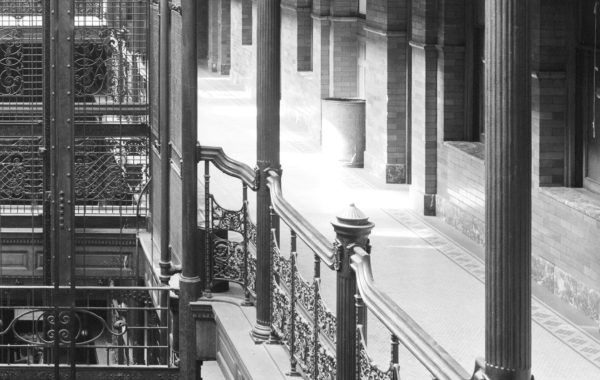That pretty view of the Empire State Building is “Bird’s-eye view of Empire State Building at night, New York City” by Angelo Rizzuto. The photograph was taken in 1953 and is part of the Library pf Congress’s “Free to Use and Reuse” collection. (They have a fairly high-resolution version available for download if you want a copy for your wall.)
First some geometry… We’re looking south at the Empire State. That’s Fifth Avenue running almost vertically in the center and the skyscrapers of the financial district are off in the distance. The two tallest buildings in the mid-ground are the New York Life and Metropolitan Life towers facing Madison Square, about half a mile south of the Empire State. Given our height and location, the photo was almost certainly taken from a high-floor window at 500 Fifth Avenue. That 60-story building was designed by Shreve, Lamb & Harmon just before they designed the Empire State and it’s very much the slightly-asymmetrical smaller sibling.
Looking downtown, we can easily make out (left to right) 70 Pine Street, 20 Exchange Place, 40 Wall Street, and the Woolworth Building. That’s nice, but what’s amazing is that we can see them at all. In the seventy years since this photo was taken, skyscrapers have spread from their ancestral homelands south of Park Row and between 34th and 57th Street to cover Manhattan island. (Perhaps I should use a fungus metaphor rather than a migration one.) The same view today would be blocked by dozens, maybe hundreds, of tall buildings in the East Village, around Union Square, and just generally everywhere in three miles between Woolworth and Empire State.
This phenomenon, the spreading of a technological idea in physical form beyond its original boundaries, has played out again and again. It’s just not usually so visible.



